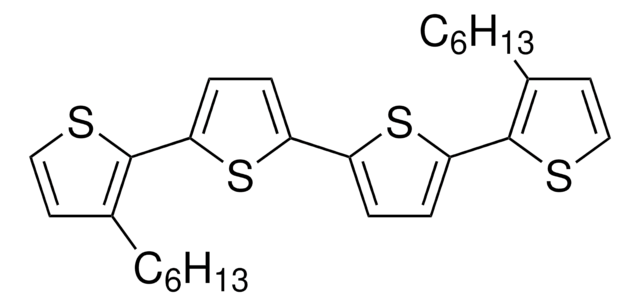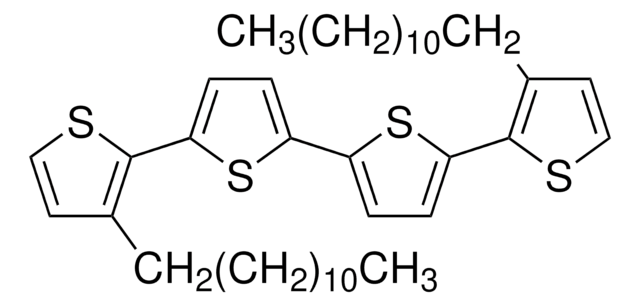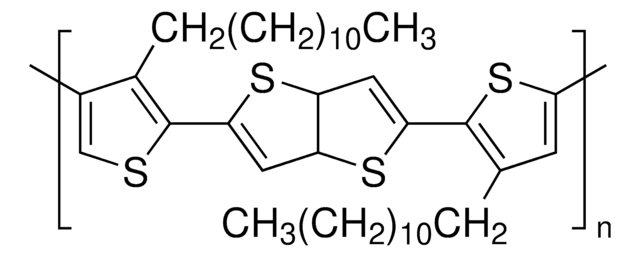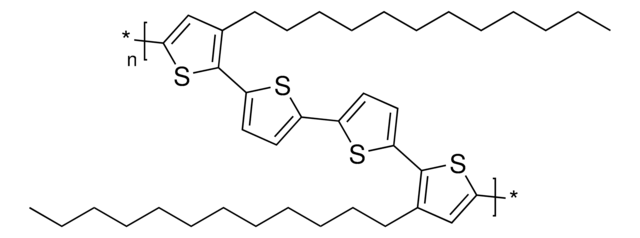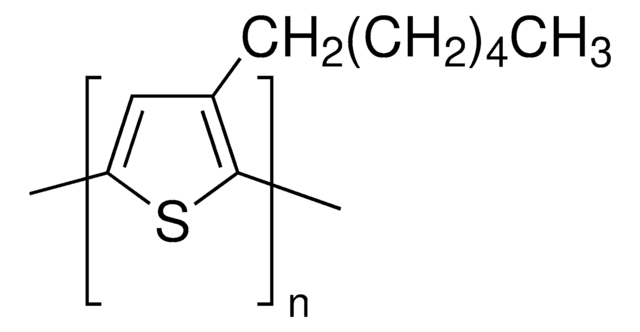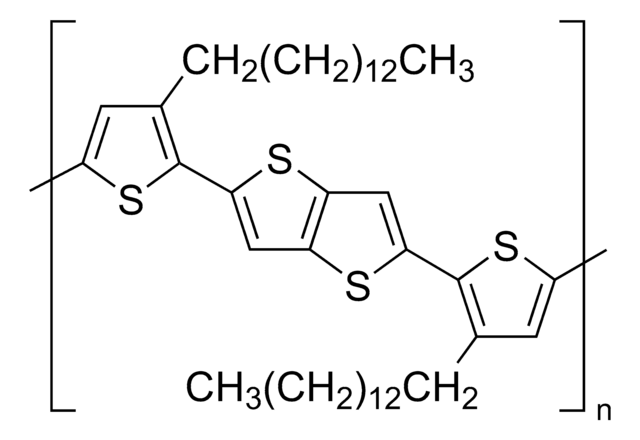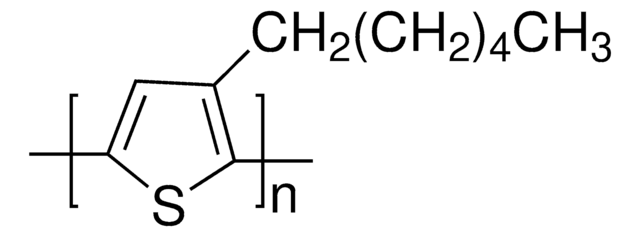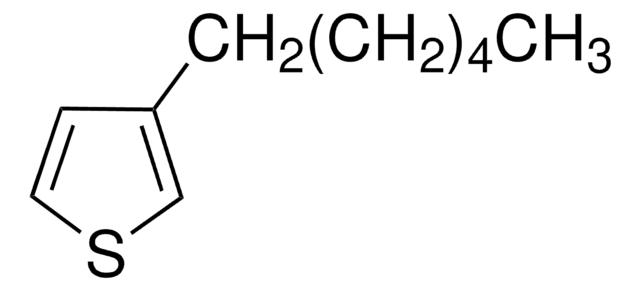633216
5,5′′′′′-Dihexyl-2,2′:5′,2′′:5′′,2′′′:5′′′,2′′′′:5′′′′,2′′′′′-sexithiophene
electron donor for OPV devices
Synonym(s):
α,ω-Dihexylsexithiophene, DH-6T
About This Item
Recommended Products
form
solid
mp
280 °C (dec.) (lit.)
solubility
chlorobenzene: soluble (soluble)
chloroform: slightly soluble
methylene chloride: slightly soluble
Orbital energy
HOMO 5.2 eV
LUMO 2.9 eV
OPV Device Performance
ITO/DH6T/PC61BM/Al
ITO/PEDOT:PSS/DH6T/PC61BM/Al
ITO/PEDOT:PSS/DH6T:PC61BM (1:1)/Al
semiconductor properties
P-type (mobility=0.13 cm2/V·s)
SMILES string
CCCCCCc1ccc(s1)-c2ccc(s2)-c3ccc(s3)-c4ccc(s4)-c5ccc(s5)-c6ccc(CCCCCC)s6
InChI
1S/C36H38S6/c1-3-5-7-9-11-25-13-15-27(37-25)29-17-19-31(39-29)33-21-23-35(41-33)36-24-22-34(42-36)32-20-18-30(40-32)28-16-14-26(38-28)12-10-8-6-4-2/h13-24H,3-12H2,1-2H3
InChI key
QCMASTUHHXPVGT-UHFFFAOYSA-N
General description
Application
Storage Class Code
11 - Combustible Solids
WGK
WGK 3
Flash Point(F)
Not applicable
Flash Point(C)
Not applicable
Personal Protective Equipment
Choose from one of the most recent versions:
Certificates of Analysis (COA)
Don't see the Right Version?
If you require a particular version, you can look up a specific certificate by the Lot or Batch number.
Already Own This Product?
Find documentation for the products that you have recently purchased in the Document Library.
Articles
Review the potential of self-assembled multilayer gate dielectric films fabricated from silane precursors for organic, inorganic, and transparent TFT and for TFT circuitry and OLED displays.
Oligothiophenes are important organic electronic materials which can be produced using synthetic intermediates and Suzuki coupling.
Organic materials in optoelectronic devices like LEDs and solar cells are of significant academic and commercial interest.
Intrinsically stretchable active layers for organic field-effect transistors (OFET) are discussed. Polymer structural modification & post-polymerization modifications are 2 methods to achieve this.
Our team of scientists has experience in all areas of research including Life Science, Material Science, Chemical Synthesis, Chromatography, Analytical and many others.
Contact Technical Service![[(S)-(−)-1-(4-Nitrophenyl)-2-pyrrolidinemethyl]acrylate 97%](/deepweb/assets/sigmaaldrich/product/structures/194/557/0896d3d3-56d0-4b1e-9c08-1fdd246b5e86/640/0896d3d3-56d0-4b1e-9c08-1fdd246b5e86.png)
